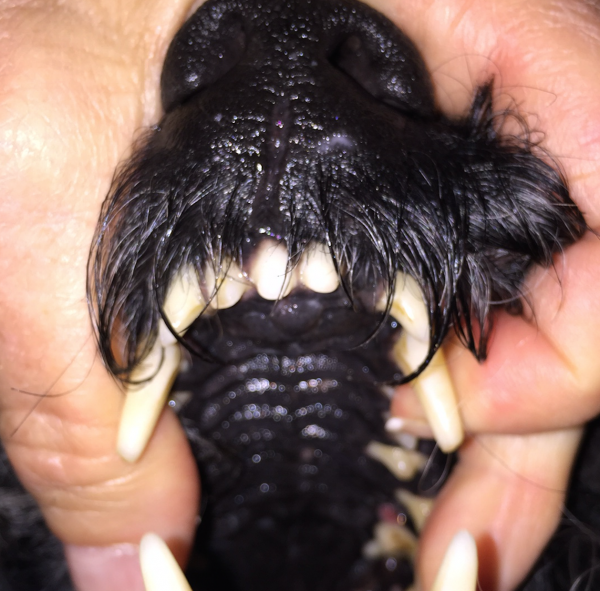
It’s no easy thing to get a Puli to pose for a picture of his rugae palatinae, but this one sacrificed his dignity to help further the cause of education. See those ridges (or folds) on the roof of his mouth? They’re not easy to see because the dog kept grousing that this wasn’t his best side, and consequently, they’re out of focus – but you can get the general idea that there are ridges up on his hard palate, as there are on every dog’s hard palate. You usually see this when your dog yawns or while brushing teeth. These formations not only help a dog with manipulating food and swallowing it, but also to drink water. They’re called “rugae palatinae,” rugae meaning “ridges,” and palatinae referring to the palate. They are also known as “plica palatine,” and the study of these patterns is called palatoscopy. Fascinating to us is that they can be used for sex determination, in orthodontics, and forensic odontology. The number of rugae in dogs range between 8 and 10, according to the McCurnin’s Clinical Textbook for Veterinary Technicians, and in brachycephalic breeds, the ridges are closely positioned rather than spaced out.
As for the dogs, the rugae palatinae come into play during a method called adhesion. Liquid moves through the oral cavity to the esophagus against gravity on the surface of the dog’s tongue as it’s drawn upwards, then a tight contact between the tongue surface and those ridges on the roof of the mouth (palatal rugae) traps the liquid and keeps it from falling out as the tongue is protruded.

Perhaps this will help?
I always wondered why they could lap water and I couldn’t make it stay in my mouth!